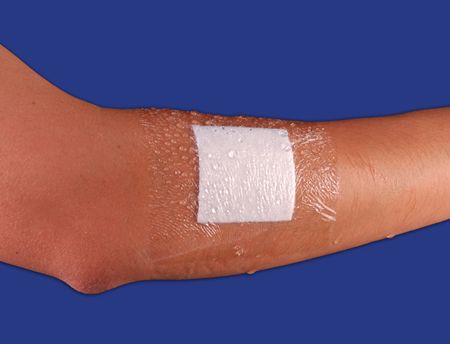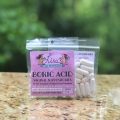Wound drainage, also called wound fluid or wound exudate, aids in assessing the status of wound management. Healthy wounds are normally moist, covered by fluid which contains specific ratios of endogenous chemicals.
This fluid serves to aid in both healing the wound as well as preventing further injury. If the drainage becomes thick and purulent, it may be pus. Pus is really a collection of white blood cells and wound fluid. Its presence signifies a continuum that ranges from inflammation to florid infection, including abscess formation.
What is Purulent drainage?
Pus is a typical sign of infection. The medical term for pus is purulent exudate. It is also sometimes called purulent drainage; the fluid is sometimes referred to as liquor puris. Drainage of wound fluid is an important factor to successful wound healing. The amount of drainage is generally documented as absent, scant, minimal, moderate, large, or copious. (Note: there is no consistent objective measurement that correlates to these descriptions.) A large amount of drainage can indicate infection, whereas a reduction in the amount of drainage can indicate an infection that is resolving or inadequate arterial circulation. The presence and degree of odor can be documented as absent, mild, or foul. Foul odors can be indicative of an infection.
How purulent drainage is treated
The first objective for purulent drainage treatment is to treat the underlying cause of infection. Other goals include keeping heavy drainage contained and preventing wound softening while also maintaining a moist environment. This will allow the wound to heal on its own.
Treatment varies by the needs of the infected person, the type of wound, where on the body it’s located, and at what point of the healing process the wound is. The character of the exudate, in amount, color and odor, can help to identify the exact nature of the infection. However, because of differences in the size of the wounds, as well as in the topical dressing applied, a meaningful estimate of drainage amount and consistency is difficult to arrive at. For example, two comparatively healthy wounds dressed in different ways may appear different. This is because some dressings absorb or react to drainage differently.
Therefore, knowledge of the applied dressing and how it interacts with wound drainage is necessary. Likewise, a similar amount of drainage from two differently sized wounds may indicate different statuses. Estimates of the drainage must be made with the wound in mind. Assessment of exudative drainage can be attained by first removing the wound dressing and cleaning the wound bed of any dressing debris followed by clinical observation of the wound bed.
Saline irrigation is the fluid of choice to remove cellular and other debris that has collected in the wound bed. Any signs of infection should be managed by a healthcare professional with expertise in wound management.
Once the underlying infection has been resolved, the improvement should be reflected in the exudate. Following treatment, purulent drainage becomes seropurulent, then serous and finally serosanguineous. The exudate should change from thick and opaque tan or yellow, to thin and watery pink.
Other types of wound drainage
Understanding the other types of drainage that may come from a wound can help identify or rule out purulent drainage. Anyone who is uncertain about the type of discharge from a wound should see a doctor.
Sanguineous drainage
Sanguineous drainage is a bright red or pink color, as it mostly comprises fresh blood. The drainage is usually syrupy or a bit thicker than regular blood. This type of drainage usually occurs just after receiving a wound. Sanguineous drainage that occurs after a few hours of a fresh wound may be a sign of trauma in the area.
Serous drainage
Serous drainage comprises proteins, white blood cells, and other key cells the body uses to heal itself. It has a thin and watery consistency. Unlike other types of drainage, serous drainage is usually clear or translucent. Too much serous drainage may be a sign of harmful germs in the area.
Serosanguineous drainage
Serosanguineous drainage is a combination of serous and sanguineous drainage. It is the most common type of wound drainage and has a thin consistency. It is often slightly pink or red and normally occurs in wounds, especially after changing dressings. ALSO SEE: How To Reduce Pain After Accident






